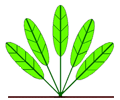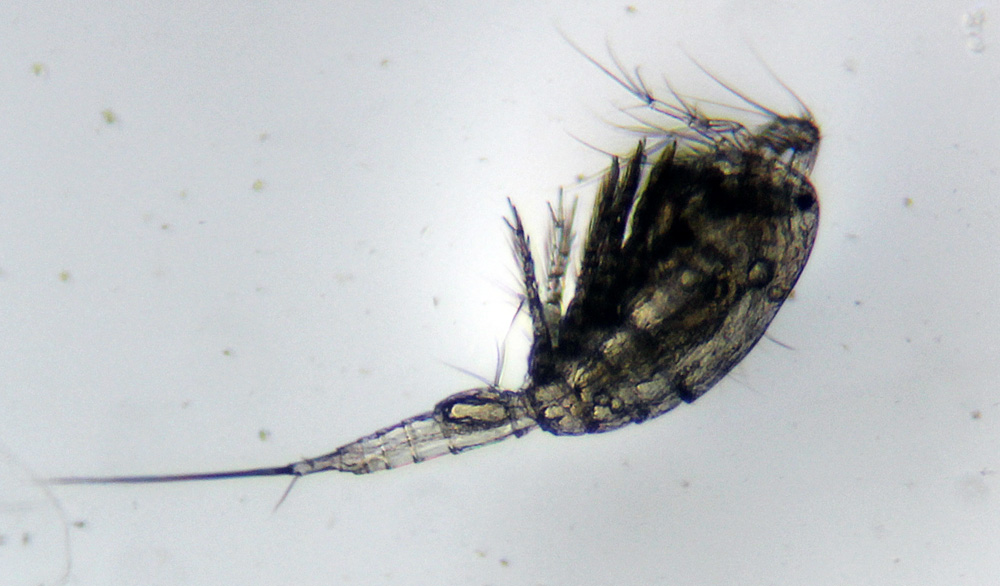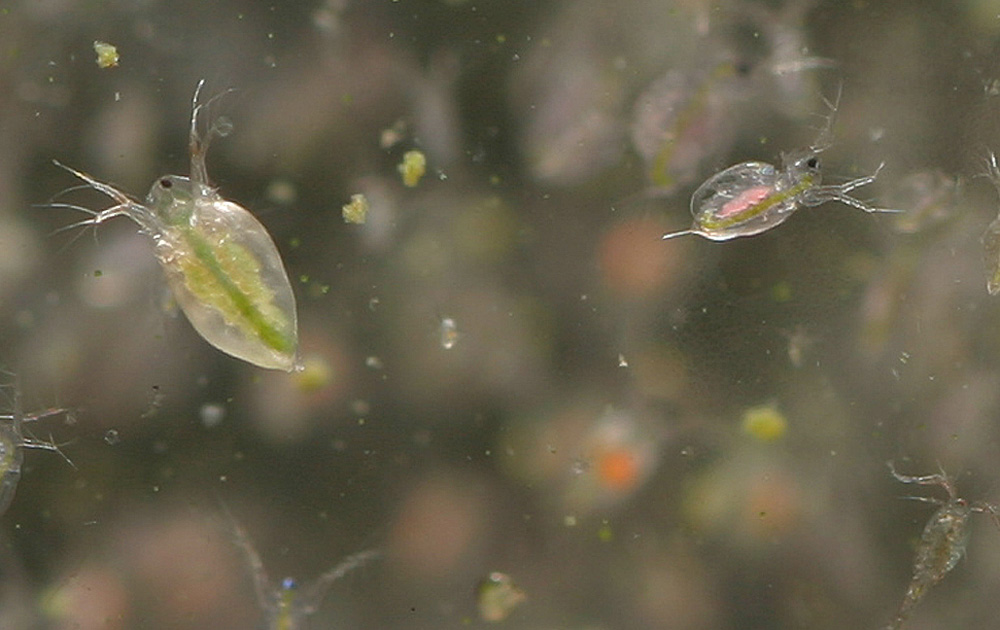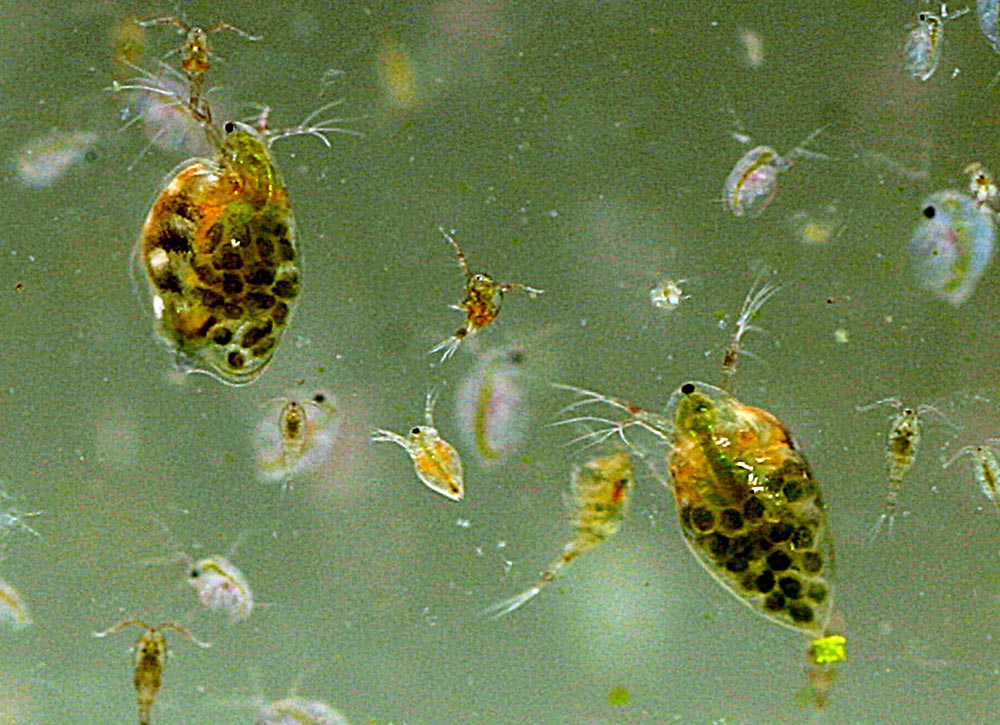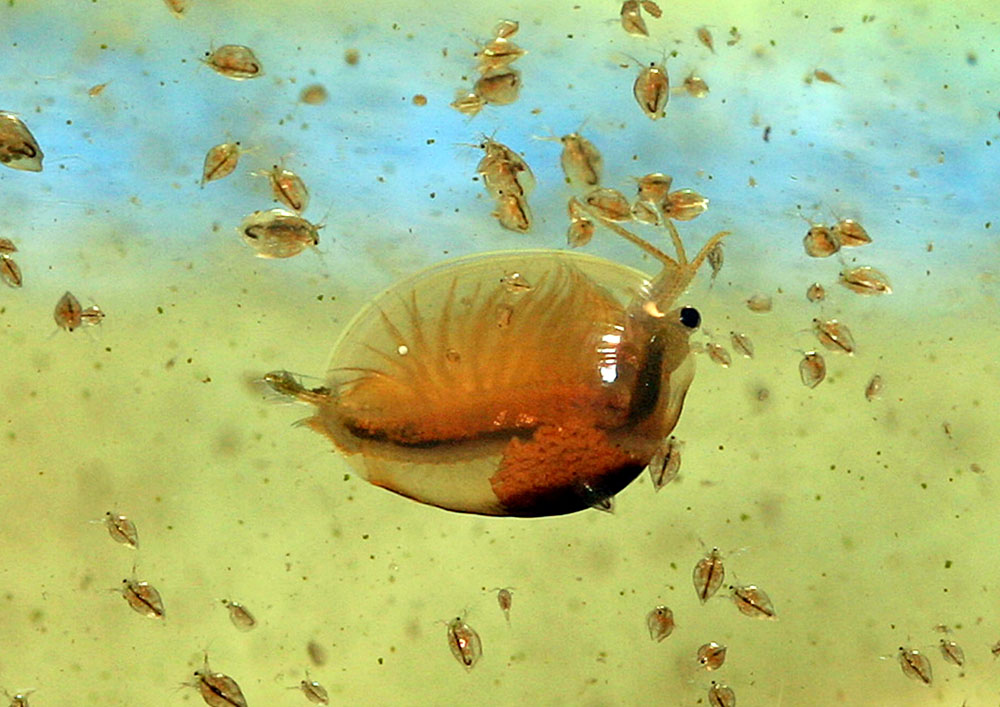Freshwater Plankton
The term plankton, singular plankter are any organisms live in the water column and are incapable of swimming against a current (from wkwipedia).
The number of species in the marine environment is huge and when we talk about plankton we usually think of the open ocean and the large marine creatures that eat plamnkton, whales and whale sharks come to mind. However there are plenty of critters in the freshwaters that are generally along with bacteria the start of the food chain.
Plankton comes as phytoplankton, plant plankton and zooplankton, animal plankton. The creatures in the freshwater billabongs and non permanent waters of the NT tropics are geared to go through many generations during the wet season and as we go further into the inland they are geared to go through their life cycle when water is available, sometimes many years apart.
When I started to try different ways to grow local native plants I would bring home a bit of black soil to try different growing media. I noticed many small creatures turning up in the ponds and blooms of different colour green after adding fertilisers.
The Aquaculture Industry has pond mechanics who have a relationship with plasnkton, the success of a pond aquaculture operation, particularly prawns operation usually depends on the success of the plankton culture.
Breeding difficult fish in captivity is often dependent on having the plankton that stimulates the fish larvae to take its first meal. I remember a conversation with Glenn Schipp about a particular type copepod from Darwin Harbour as the critter that made their Golden Snapper take their first feeds. The attempts to breed small fish that have not been bred in captivity before may depend on the type of plankton offered as a first food to fry.
Identifying the different types of freshwater plankton is difficult. There are some good guides and information on the www as well as good books that I will list below in the references section.
Paramecium
Rotifers
Cyclops
Moina and Daphnia
Clamshrimps
Desert Plankton
Algae
Pictures are coming.
Growing plankton in a pond is very enjoyable. The Scientists at the Darwin Aquaculture Centre gave me a schedule for growing plankton that went over 35 days. I modified it down to 30 days so I can start my ponds off at the first of the month so I always know what day we are up to just by looking at the calender. It is the best way to feed your pond and aquarium Fish.
Plankton Culture guide below is a rough schedule for making a plankton culture.
FERTILISATION SCHEDULE FOR PLANKTON CULTURE
Fill pond make sure hardness and alkalinity are each over 50 ppm
Increase alkalinity with potassium bicarbonate 20 gm per 1000 litres to increase 10 ppm.
Increase hardness with, dolomite lime or a mixture of 1/1 epsom salts with calcium chloride or 1/1 Lime and magnesium sulphate, 20 gm per 1000 litres will raise hardness approx 10 ppm.
Day 1 add inorganic fertiliser ((currently I use Aquasol at 2 ppm) (Optional – add some dry soil from a nearby dry stream or billabong)
Day 3, add organic fertiliser @ 50 ppm (only add 6 ppm if fish present)
Day 12, add inorganic fertiliser as day 1
Day 14 start harvesting plankton or stock with fish
Day 17 add organic fertiliser @ 6 ppm
Day 22 add inorganic fertiliser as per day 1
Day 24 add organic fertiliser @ 6 ppm
Day 27 add organic fertiliser @ 6 ppm
Day 31 add organic fertiliser @ 6 ppm
This is not a strict schedule and may need to be modified depending on the following factors:
1. A sicce depth of less than 40 cm will negate the need for later inorganic fertiliser. A sicce depth of over 70 cm will require an addition of fertiliser. (try 2ppm inorganic)
2. An occurrence of filament algae will negate the need for later inorganic fertiliser.
3. Low oxygen levels will negate the need for later applications of organic fertiliser
4. For a pond with life that is established omit the 50 ppm organic fert addition and replace with 6 ppm organic on day three.
References and further reading
Boyd, 1995, “Bottom Soils, Sediment, and Pond Aquaculture“.
Hoff & Snell, 1987, “Plankton Culture Manual“
